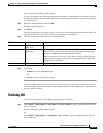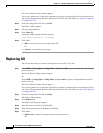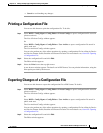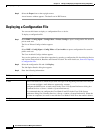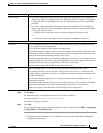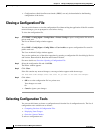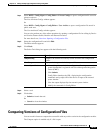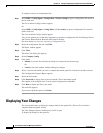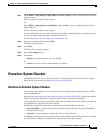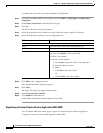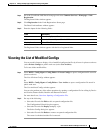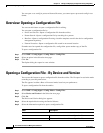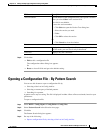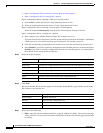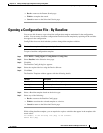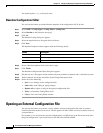
10-21
User Guide for Resource Manager Essentials 4.1
OL-11714-01
Chapter 10 Editing and Deploying Configurations Using Config Editor
Overview: Syntax Checker
Step 1 Select RME > Config Mgmt > Config Editor > Private Configs to open a configuration file stored in
private work area.
The List of Private Configs window appears.
Or
Select RME > Config Mgmt > Config Editor > User Archive to open a configuration file stored in
public work area.
The User Archived Configs window appears.
You can also perform any of the editor operations by opening a configuration file for editing by Device
and Version, Pattern Search, Baseline and External Location.
For more details see, Overview: Opening a Configuration File.
Step 2 Select the configuration file and click Edit.
The Editor window appears.
Step 3 Click Tools.
The Select Tool dialog box appears.
Step 4 Select View Changes option.
Step 5 Click either:
• Submit to view the differences in a new window.
Or
• Cancel to close the window without making any changes.
Overview: Syntax Checker
Config Editor provides ways to check the syntax of config commands using syntax checker. Config
Editor checks syntax using the
Interface to External Syntax Checker.
Interface to External Syntax Checker
The external syntax checker has to be registered with Cisco Management Integration Center (CMIC)
using Link Registration.
For details see, Registering an External Syntax Checker Application With CMIC. Config Editor queries
CMIC to check if the application is registered with the name “Config Syntax Checker”.
If the application is registered, Config Editor knows the External Syntax Checker URL to be launched
and parameters to be passed to the syntax checker.
Config Editor launches the URL with two parameters, deviceSysObjID and cfgCmds:
• deviceSysObjID—sysObjectID of the device. External Syntax Checker uses deviceSysObjID to
identify the device type.
• cfgCmds—List of commands for which the syntax has been checked.
ConfigEditor launches the External Syntax Checker URL in POST method. When the URL is launched
you can view the configuration commands for which the syntax has been checked.



